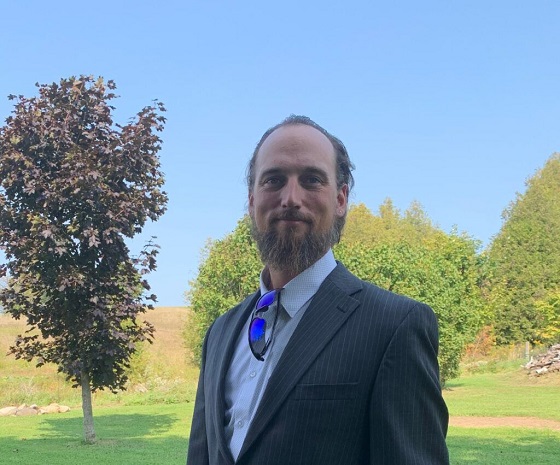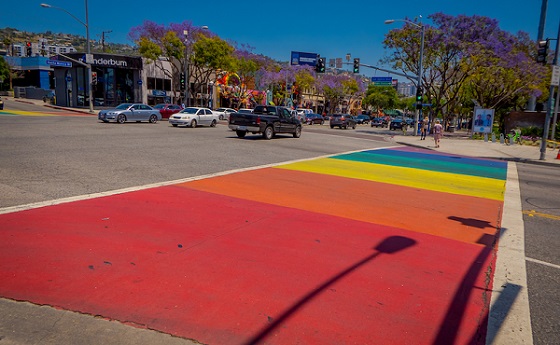Alberta
39 percent increase in funding for RCMP instigates discussion about future policing for rural Alberta

Alberta’s government will pay the 39% increase for one year and will begin engagement with smaller communities on their policing needs for the future.
Alberta’s government is temporarily freezing the amount rural municipalities are responsible for paying for front-line policing services in Alberta.
The province is responsible for providing policing services to municipal districts, counties and urban municipalities with populations less than 5,000. In response to rising rural crime, Alberta’s government announced increased funding for RCMP services in 2019 which helped create hundreds of additional RCMP positions across the province.
When these changes came into effect in 2020, the province also worked with Alberta Municipalities and Rural Municipalities of Alberta to create a shared funding model through the Police Funding Regulation. Now, due to higher costs from recent RCMP collective agreements, the cost for policing in these smaller communities will increase by 39 per cent, with no corresponding increase in the services provided. To assist municipalities with these new costs, Alberta’s government will pay the increase for one year and will begin engagement with them on their policing needs for the future.
“The expiring regulation would have municipalities seeing a 39 per cent increase in their costs – with no improvement in policing services delivered. We know this is not acceptable for many municipalities. This cost freeze will give rural municipalities the stability and predictability they need, and it will allow for meaningful engagement between the province and municipalities on equitable support.”
“Alberta’s government understands that such an increase in costs for service will be a challenge to our rural municipalities. With the costs frozen for a year, we look forward to a comprehensive review of the police funding model with our municipal partners. During our review, we will carefully consider all factors to ensure we provide an updated funding model that is sustainable.”
Municipalities are preparing their budgets for 2025, and those served by the RCMP under the Provincial Police Service Agreement can continue to expect the same level of service without the additional costs for one year. While these costs are shared between municipalities and the province, the province will pay a higher proportion of the costs next fiscal year, a total of $27 million, so that municipalities’ costs remain stable while they determine how to cover the increases on a forward basis and what the best model of policing is for their community.
The Police Funding Regulation introduced in 2020 was phased in over several years, with rural municipalities paying an increasing share of their policing costs each year for four years. Municipalities have been paying 30 per cent of front-line policing costs since fiscal year 2023-24. By sharing costs, the province has been able to afford the addition of many new RCMP police officers, programs and services over the past several years.
The Police Funding Regulation has been in place for almost five years, and with the significant cost increases coming from the federal government, the province will undertake a review to determine what improvements may be needed. While the regulation was originally supposed to expire March 31, 2025, Alberta’s government has extended it by one year to March 31, 2026, which will enable the province and municipalities to have fulsome conversations about future policing needs and models. More details about the comprehensive review and engagement opportunities for rural municipalities will be released shortly.
Quick Facts:
- The Police Funding Regulation brought in a new funding model, which was phased in over several years, with rural municipalities paying an increasing share of their policing costs each year, reaching the intended 30 per cent in 2023.
- They were charged 10 per cent starting April 1, 2020. This increased to 15 per cent one year later, 20 per cent the following year and finally 30 per cent starting April 1, 2023.
- The initial funding model was based on 2018 costs to provide certainty and stability to municipalities.
- After 2024-25, the municipal share will be required to be based on current policing costs, resulting in a proposed 39 per cent increase in costs for municipalities.
- The Police Funding Model enabled a $235.4-million investment in policing over five years, adding 285 regular members and 244 civilian positions to enhance rural policing.
Agriculture
Lacombe meat processor scores $1.2 million dollar provincial tax credit to help expansion

Alberta’s government continues to attract investment and grow the provincial economy.
The province’s inviting and tax-friendly business environment, and abundant agricultural resources, make it one of North America’s best places to do business. In addition, the Agri-Processing Investment Tax Credit helps attract investment that will further diversify Alberta’s agriculture industry.
Beretta Farms is the most recent company to qualify for the tax credit by expanding its existing facility with the potential to significantly increase production capacity. It invested more than $10.9 million in the project that is expected to increase the plant’s processing capacity from 29,583 to 44,688 head of cattle per year. Eleven new employees were hired after the expansion and the company plans to hire ten more. Through the Agri-Processing Investment Tax Credit, Alberta’s government has issued Beretta Farms a tax credit of $1,228,735.
“The Agri-Processing Investment Tax Credit is building on Alberta’s existing competitive advantages for agri-food companies and the primary producers that supply them. This facility expansion will allow Beretta Farms to increase production capacity, which means more Alberta beef across the country, and around the world.”
“This expansion by Beretta Farms is great news for Lacombe and central Alberta. It not only supports local job creation and economic growth but also strengthens Alberta’s global reputation for producing high-quality meat products. I’m proud to see our government supporting agricultural innovation and investment right here in our community.”
The tax credit provides a 12 per cent non-refundable, non-transferable tax credit when businesses invest $10 million or more in a project to build or expand a value-added agri-processing facility in Alberta. The program is open to any food manufacturers and bio processors that add value to commodities like grains or meat or turn agricultural byproducts into new consumer or industrial goods.
Beretta Farms’ facility in Lacombe is a federally registered, European Union-approved harvesting and meat processing facility specializing in the slaughter, processing, packaging and distribution of Canadian and United States cattle and bison meat products to 87 countries worldwide.
“Our recent plant expansion project at our facility in Lacombe has allowed us to increase our processing capacities and add more job opportunities in the central Alberta area. With the support and recognition from the Government of Alberta’s tax credit program, we feel we are in a better position to continue our success and have the confidence to grow our meat brands into the future.”
Alberta’s agri-processing sector is the second-largest manufacturing industry in the province and meat processing plays an important role in the sector, generating millions in annual economic impact and creating thousands of jobs. Alberta continues to be an attractive place for agricultural investment due to its agricultural resources, one of the lowest tax rates in North America, a business-friendly environment and a robust transportation network to connect with international markets.
Quick facts
- Since 2023, there are 16 applicants to the Agri-Processing Investment Tax Credit for projects worth about $1.6 billion total in new investment in Alberta’s agri-processing sector.
- To date, 13 projects have received conditional approval under the program.
- Each applicant must submit progress reports, then apply for a tax credit certificate when the project is complete.
- Beretta Farms has expanded the Lacombe facility by 10,000 square feet to include new warehousing, cooler space and an office building.
- This project has the potential to increase production capacity by 50 per cent, thereby facilitating entry into more European markets.
Related information
Alberta
Alberta Next: Alberta Pension Plan

From Premier Danielle Smith and Alberta.ca/Next
Let’s talk about an Alberta Pension Plan for a minute.
With our young Alberta workforce paying billions more into the CPP each year than our seniors get back in benefits, it’s time to ask whether we stay with the status quo or create our own Alberta Pension Plan that would guarantee as good or better benefits for seniors and lower premiums for workers.
I want to hear your perspective on this idea and please check out the video. Get the facts. Join the conversation.
Visit Alberta.ca/next
-

 Energy1 day ago
Energy1 day agoB.C. Residents File Competition Bureau Complaint Against David Suzuki Foundation for Use of False Imagery in Anti-Energy Campaigns
-

 Alberta2 days ago
Alberta2 days agoAlberta uncorks new rules for liquor and cannabis
-

 COVID-191 day ago
COVID-191 day agoCourt compels RCMP and TD Bank to hand over records related to freezing of peaceful protestor’s bank accounts
-

 Crime2 days ago
Crime2 days agoProject Sleeping Giant: Inside the Chinese Mercantile Machine Linking Beijing’s Underground Banks and the Sinaloa Cartel
-

 C2C Journal23 hours ago
C2C Journal23 hours agoCanada Desperately Needs a Baby Bump
-

 International1 day ago
International1 day agoTrump transportation secretary tells governors to remove ‘rainbow crosswalks’
-

 Alberta1 day ago
Alberta1 day agoAlberta Next: Alberta Pension Plan
-

 Agriculture10 hours ago
Agriculture10 hours agoLacombe meat processor scores $1.2 million dollar provincial tax credit to help expansion



